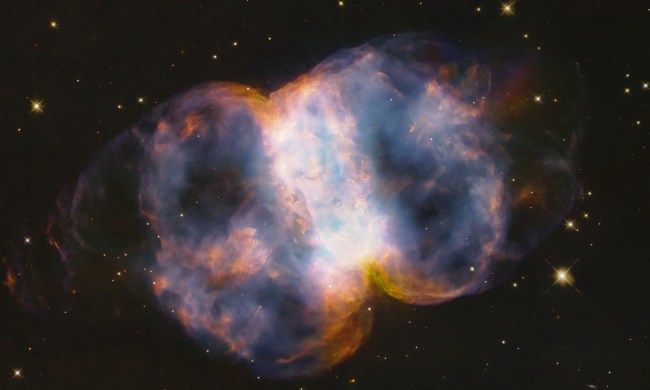Every week, scientists using the Hubble Space Telescope share an image from this beloved piece of space technology, and this week’s image shows a vital astronomical phenomenon in action. While space telescopes can observe very far-off objects if they are bright enough, there is still a lot of the universe that is too far away to observe — which is why researchers make use of a natural occurrence called gravitational lensing.
Gravitational lensing happens when an object like a galaxy or galaxy cluster has so much mass that it noticeably warps spacetime. Everything with mass bends spacetime somewhat, but usually this effect is so small as to be effectively invisible. But when the object is something with as much mass as a large galaxy or even a collection of galaxies, then this warping can be significant enough for us to observe it.
This warping can have very useful effects, as it bends light coming from far-off objects. If a massive galaxy cluster sits between us and a faint, distant galaxy, then the gravitational lensing effect can act like a magnifying glass, making the light from the background object brighter. This allows astronomers to see some of the most distant — and therefore some of the oldest — galaxies in the universe.

In this Hubble image, the galaxy cluster SPT-CL J0019-2026 sits at the center. Located 4.6 billion light-years away, it is the mass of this huge cluster that creates the lensing effect, and you can see that the light from galaxies around the central cluster is stretched into elongated shapes as a result of the lensing. Without the lensing effect, these background galaxies would be too far away to see, so by taking advantage of the lensing effect, Hubble is able to see even further out into space.
This image was taken as something of a “bonus” image as part of a gap-filling project. Telescopes like Hubble receive far more applications from scientists who want to use them than can be accommodated, so time on a telescope is very precious. But there are sometimes small gaps in between different observations using the telescope, and researchers make the most out of this spare time by using it to observe interesting targets like this galaxy cluster.



